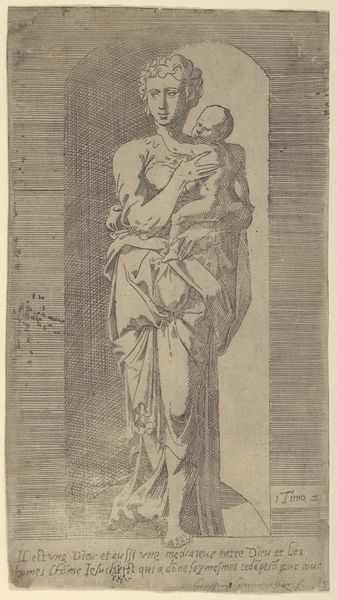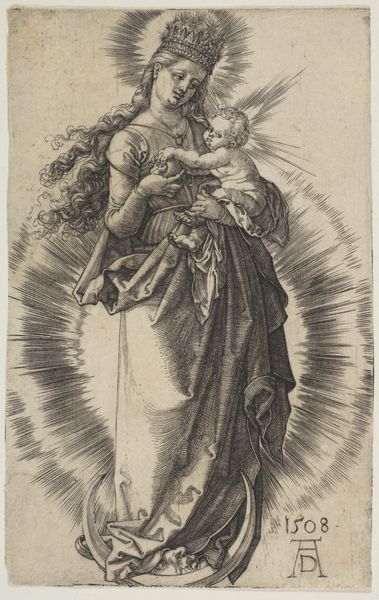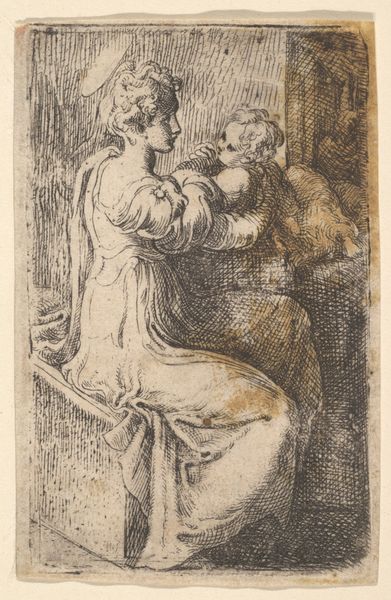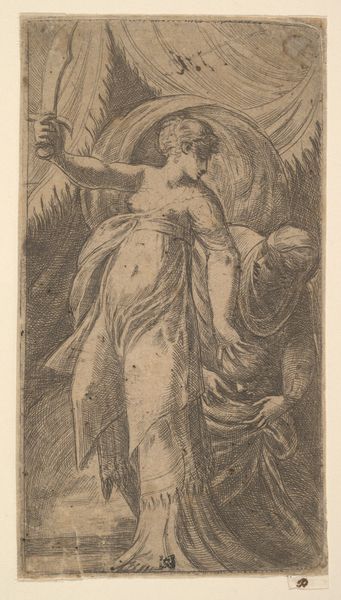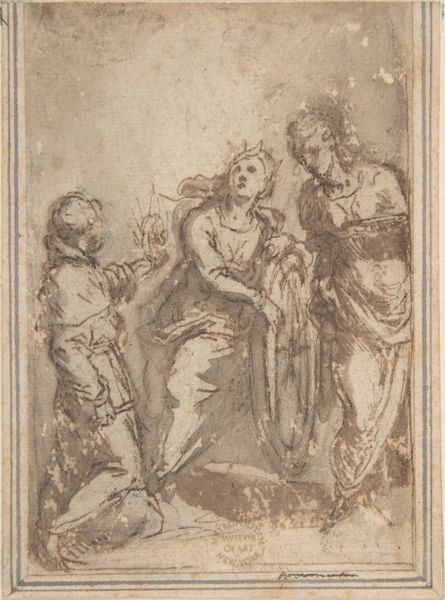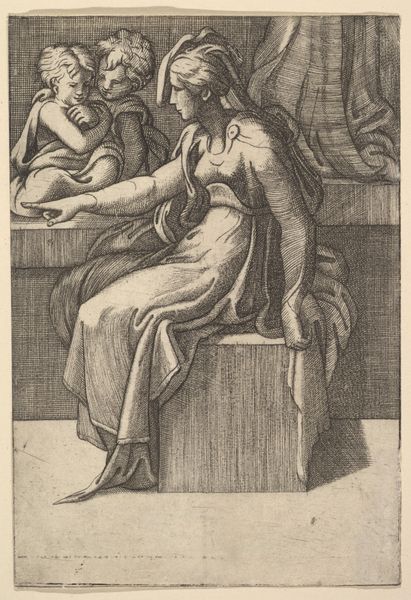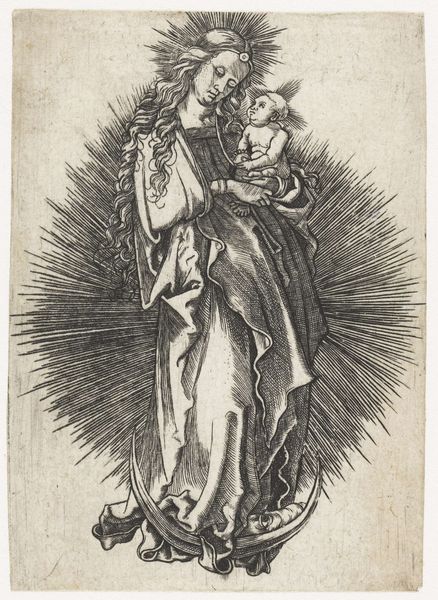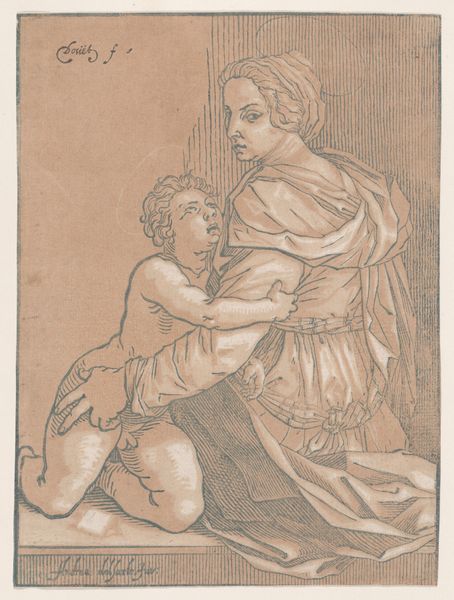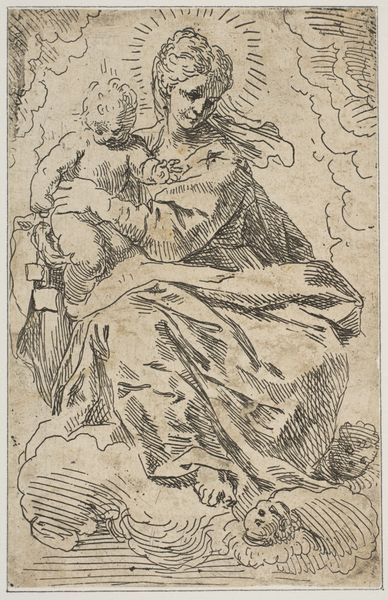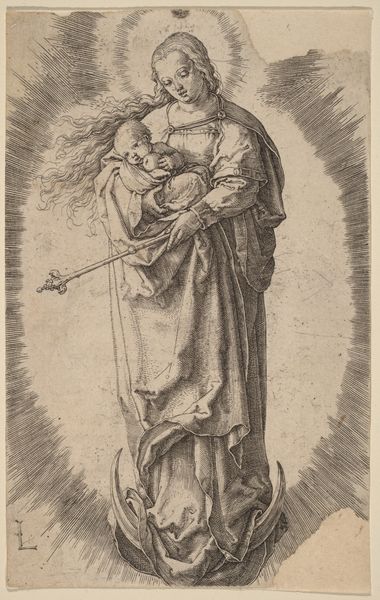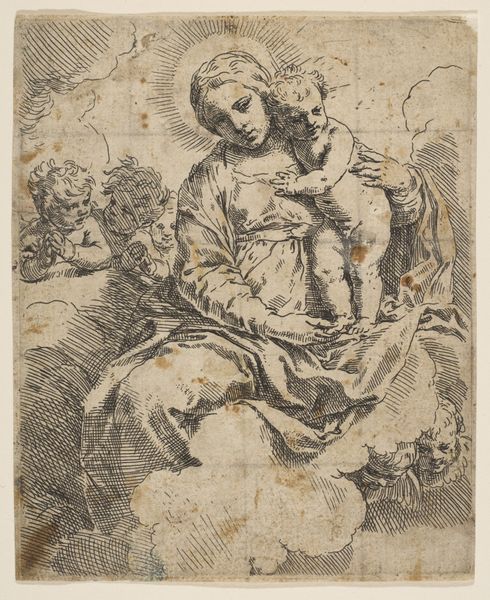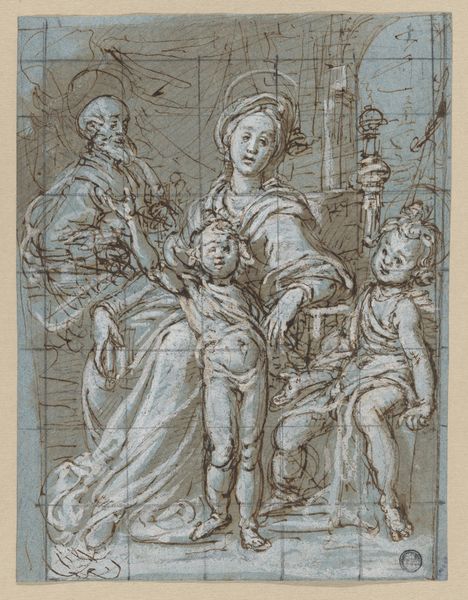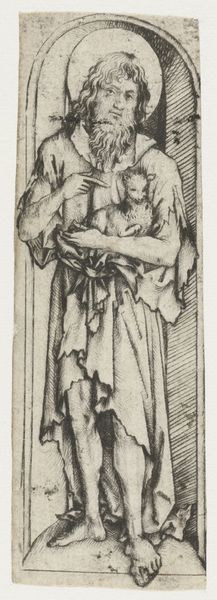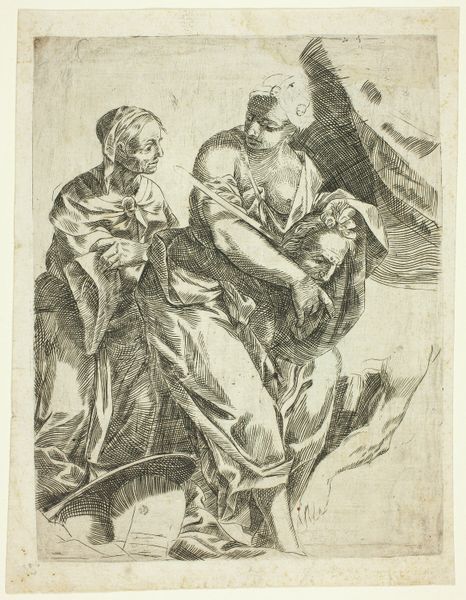
drawing, print, sculpture
#
portrait
#
drawing
#
allegory
# print
#
pencil sketch
#
charcoal drawing
#
11_renaissance
#
pencil drawing
#
sculpture
#
pen-ink sketch
#
history-painting
Dimensions: 6-5/8 x 4 in. (16.9 x 10.2 cm)
Copyright: Public Domain
Curator: This captivating drawing, entitled "Allegory of Sculpture," was created in 1619 by Johann Andreas Rauch and is currently held in the collection of the Metropolitan Museum of Art. Editor: It’s striking! There’s an almost dreamlike quality, a gentle and ethereal mood evoked by the monochrome palette and the flowing lines. It’s a tableau suspended between worlds, isn't it? Curator: Indeed. The artist employs line and tone to construct a symbolic world. Note the central figure, a woman, presumably representing Sculpture herself, cradling a child. Editor: The woman, positioned centrally, reinforces the established art historical rhetoric. She is holding the child who may signify artistic creation as birth. How does the art work reinforce or subvert common allegorical tropes? Curator: Observe, also, the collection of instruments surrounding her feet – drafting tools, a globe, an architectural rendering. They are placed purposefully to symbolize knowledge. The arrangement underscores the intellectual and skilled labor inherent in sculpture. The materiality suggests graphite or charcoal drawings. Editor: Yes, but looking at the cultural context we should acknowledge this symbolic positioning and skill are rooted in a male dominated practice, so who had access and opportunity, and how can we expand the narrative and acknowledge the contributions of women sculptors of this time, or women in Rauch's community and life who facilitated his practice? Curator: A crucial point, certainly. Perhaps we can see Rauch's use of the female form as an acknowledgement of both the practice, and a lament for its imbalance? It certainly promotes considerations on craft. Editor: In terms of contemporary culture and audience reception I'm always trying to reconcile the art history canon. How might we read the woman differently? The female personification and symbolic meanings serve a larger narrative, and might act as a means to introduce contemporary theory that can extend conversations and create change. Curator: An important observation, how these elements can be re-read in various contexts to deepen our interpretation. This reading encourages a fresh perspective on Rauch's piece, challenging classical interpretations and revealing additional layers of meaning embedded within the artwork. Editor: It highlights the dynamism and constant negotiation in understanding artistic achievement.
Comments
No comments
Be the first to comment and join the conversation on the ultimate creative platform.
